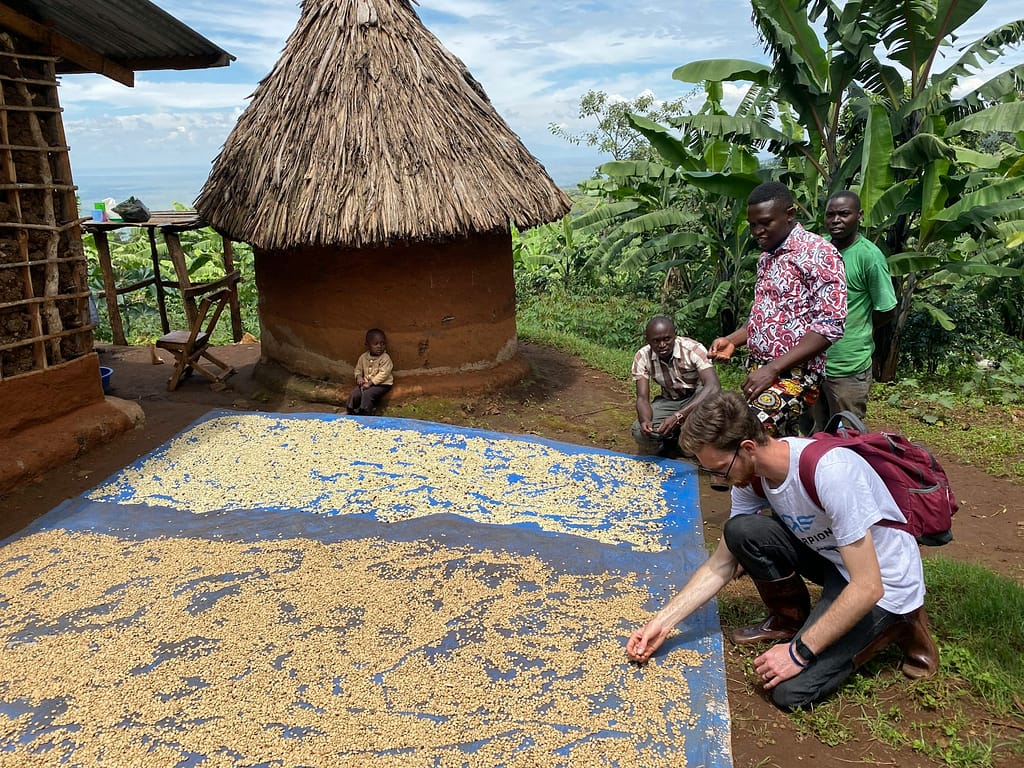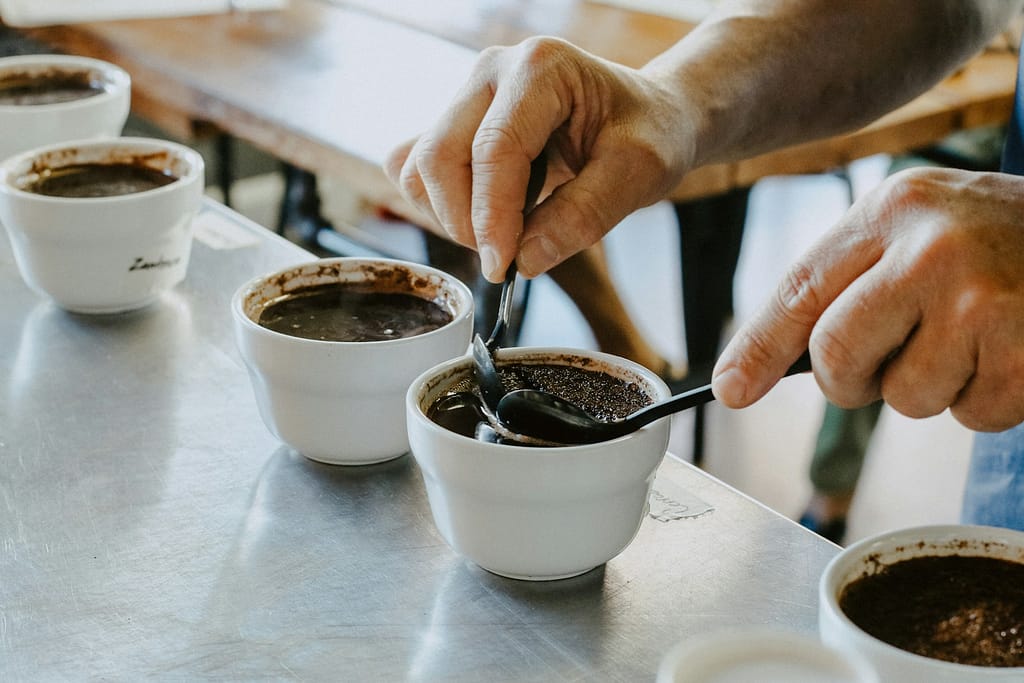Coffee beans are way more exciting than your average morning buzz! If you’re curious about the types of coffee beans, you’re in for a treat. Ever wondered about the different flavors tickling your taste buds? That’s the magic of coffee beans, my friend. Whether it’s Arabica, Robusta, Liberica, or Excelsa, each type brings something unique to your cup of joe.
Now, if you’re globetrotting from the highlands of Ethiopia to the jungles of Vietnam, these beans tell a story. Arabica beans claim the title of smooth operators, these beans make up about 60% of the world’s coffee production. Meanwhile, Robusta beans bring their bold taste, hailing from the vast lands of Africa and Southeast Asia. Each of these beans undergoes distinct methods of preparation too, from wet processing to natural drying. Sounds fun, doesn’t it? Let’s hop on this caffeinated adventure!
The Four Main Types of Coffee Beans
Alright, coffee lovers, gather ’round! Let’s take a trip through the fascinating world of coffee beans. Whether you’re a latte artist or a drip coffee devotee, knowing what’s in your cup can enhance your brewing experience. Today, we’ll explore the four types of coffee beans: Arabica, Robusta, Liberica, and Excelsa. Each of these beans has its own distinctive flavor, aroma, and geographical background. Let’s brew some knowledge!
Arabica

Photo by Ryutaro Tsukata
Arabica beans are like the popular kids in school—they’re smooth, well-liked, and sought after everywhere. With complex and nuanced flavors ranging from floral and fruity to spicy and chocolatey, Arabica engages the senses on multiple levels. They require higher altitudes and cooler, subtropical climates to thrive, making them a mainstay in countries like Ethiopia, Colombia, India, Costa Rica, and Brazil. Arabica grows best in regions where the soil is rich and the rainfall is plentiful, cultivated with methods like wet processing which enhance its flavor profile.
Key Regions & Growing Conditions:
- High altitudes
- Mild temperatures
- Regions grown: Ethiopia, Colombia, India, Costa Rica, Brazil
You can find more about its growing conditions here.
Robusta
If Arabica is the smooth talker, Robusta is your bold and brassy friend who never shies away from making an entrance. Known for its strong, bitter taste with earthy notes, Robusta holds twice the caffeine content of Arabica. You’ll often find it adding punch to espresso blends. Its resilience against pests and diseases makes it economically crucial, especially in Vietnam and Brazil, where its cultivation supports local economies. These beans are not very common in the United States outside of Vietnamese coffee shops.
Taste & Caffeine Content:
- Bold & bitter
- High caffeine (2.7%-3.0%)
- Regions grown: Vietnam, Brazil, Indonesia, Uganda, and India
Read more about Robusta’s economic importance and taste on this site.
Liberica
Liberica beans are the exotic cousin in the coffee family, with a delightful aroma and a fruity and floral flavor profile. The taste is bold, sometimes smoky with woody notes, offering an experience that’s surprising and indulgent. This bean is mostly grown in Southeast Asia, particularly in the Philippines, Malaysia, and Indonesia. It’s not as prolific as the others, but its uniquely large and irregular beans make it a standout.
Distinctive Characteristics:
- Fruity, floral aroma
- Woody, smoky flavors
- Grown in: Philippines, Malaysia, Indonesia
Discover more about Liberica’s distinct flavor here.
Excelsa
Last but definitely not least, we have Excelsa. This bean is the quirky uncle who always manages to surprise everyone at the family reunion. Excelsa’s flavor is both fruity and tart, adding a pop of acidity that’s crucial in coffee blends. Its funky, teardrop shape and unique taste make it a small but notable player in the coffee market, often used to add depth and complexity to blends.
Flavor & Role in Blends:
- Fruity and tart
- Adds depth to coffee blends
Understand Excelsa’s unique role in blends by checking out this link.
There you have it! Each coffee bean type brings something unique to the table, and understanding these nuances can elevate your coffee game to a whole new level. Each bean has its strengths and standout features, offering a little something for every coffee enthusiast out there. Enjoy experimenting and finding your favorite! Before you go, let’s look more about the top regions and the coffee they produce.
Coffee Bean Growing Regions
When it comes to coffee, those little beans play their part flawlessly, and their roots—or shall I say their regions—make all the difference. Just like different grapes yield unique wines, coffee beans from different corners of the world each tell their own tale. Let’s go on a whirlwind tour of the globe, hopping from one coffee paradise to another. Buckle up; it’s going to be an aromatic journey!
Latin America: The Coffee Powerhouses

Photo by Quang Nguyen Vinh
Colombia and Brazil are two countries that pop to mind when discussing Latin American coffee. Known for their lush landscapes, these regions have mastered the art of growing coffee beans.
- Colombia: This country is famous for its Arabica beans, known for their smooth, mild flavor. Colombian coffee beans are often washed, a process where the pulp is removed from the bean before drying, giving the coffee a clean and bright taste. They are the backbone for many of the blends we love today.
- Brazil: Brazil stands as the top coffee producer in the world. The variety here ranges widely, including both Arabica and Robusta. Brazilian beans often undergo the natural or dry process, where beans dry inside the pulp, giving them a rich, sweet body. Perfect for espresso lovers!
Africa: The Birthplace of Coffee
Africa is like a treasure chest of coffee beans, each variety bringing a bit of magic. Let’s explore Ethiopia and Kenya, countries that are practically synonymous with coffee excellence.
- Ethiopia: Often considered the birthplace of coffee, Ethiopian beans are as diverse as a wild garden. They are known for their fruity and floral notes, often processed using traditional dry methods, adding to their unique flavor. It’s like sipping a bit of history! These are my favorite beans. Ethiopian Exploring the Flavors: Types of Ethiopian Coffee Beans
- Kenya: Kenyan coffee is renowned for its bold and distinct taste, rich with acidity and notes of berries and citrus. They use the washed method, giving these beans a beautifully clean and crisp profile. If you love a bright morning cup, Kenyan is your go-to.
Asia: The Exotic Coffee Lands
Asia houses some hidden gems when it comes to coffee, with Indonesia and Vietnam leading the charge.
- Indonesia: Known for its earthy yet full-bodied coffee, Indonesia’s beans pack a different kind of punch. The most famous regions include Sumatra and Java. These beans undergo the Giling Basah process or “wet-hulled” method, which contributes to their deep, syrupy flavors.
- Vietnam: The giant of Robusta production, Vietnam is a critical player in the coffee world. Vietnamese coffee has a strong, robust character that is perfect for those who prefer their brew intense. It’s often found in your instant coffee, providing that caffeine jolt we sometimes crave.
You might want to take a sip of your coffee and see which corner of the world it takes you to! Exploring the types of coffee beans and their origins adds a sprinkle of adventure to your daily brew. Which region’s brew do you think you’re sipping today? This next topic is for the real coffee geeks out there. If you dig deep enough, how beans are processed can be a game changer.
Processing Methods for Coffee Beans
Welcome to the world of coffee processing, where the magic truly begins! Coffee beans don’t just jump from farms to your cup; they take a fascinating journey through different processing methods that greatly influence their flavor profiles. From the washed process to the natural method and the intriguing honey process, each technique contributes its unique touch to the coffee beans. So, grab your favorite mug, and let’s explore these processes together!
Washed Process (Wet Method)
The washed process, also known as the wet method, is like giving coffee beans a little spa day. Here’s how it works:
- Sorting: Coffee cherries are sorted by ripeness, ensuring only the best ones make the cut.
- Pulping: The skin and pulp are removed, leaving a sticky mucilage on the beans.
- Fermentation: Beans are soaked in water for about 24-36 hours to break down the remaining mucilage.
- Drying: Finally, beans are dried under the sun or in mechanical dryers.
This method, popular in regions like Colombia and Ethiopia, gives coffee a cleaner, brighter taste. It’s like a zesty citrus punch compared to other methods. Curious to know more about washed coffees? Check out this post on Processing 101: What is Washed Coffee.
Natural Process (Dry Method)
Ever wondered how coffee could taste fruity? Meet the natural process, the oldest method where coffee cherries dry under the sun, becoming sweet little raisin-like nuggets. This method goes like this:
- Harvesting: Only ripe cherries make it to the drying beds.
- Drying: The whole cherry is left to dry in the sun over weeks.
- Hulling: Once dried, the outer layers are removed to reveal the bean inside.
This dry method, common in regions like Brazil, often results in coffee with a fuller body and sweet flavors like berries or chocolate. It’s like a dessert in a cup! If you’re keen on learning more, discover the nuances of natural processing in the blog What Is Natural Process Coffee?.
Honey Process
A cross between natural and washed methods, the honey process is as sweet as it sounds. In this method:
- Pulping: The coffee cherry’s skin is removed, but some mucilage is left intact.
- Drying: Beans dry with this sticky layer, which varies in color (yellow, red, or black) and dictates sweetness levels.
This innovative method, popular in Costa Rica, produces coffee with layered sweetness and a balanced taste profile, blending the brightness of washed coffee and the fruitiness of natural. Dive deeper into the What is Honey Processed Coffee? to understand its unique charm.
By understanding these processes, you can appreciate the diverse flavors in your cup. I know in my journey, I don’t care for honey processed beans, but it’s always good to keep an open mind. Coffee can be like wine, one batch is not always the same as the next.
This exploration of coffee beans and the art of preparation invites us all to savor each cup a little more. Whether you’re sipping a smooth Arabica or a bold Robusta, every bean has a story waiting to unfold in your next brew. So, next time you sip on your favorite brew, take a moment to taste the journey of those coffee beans!




